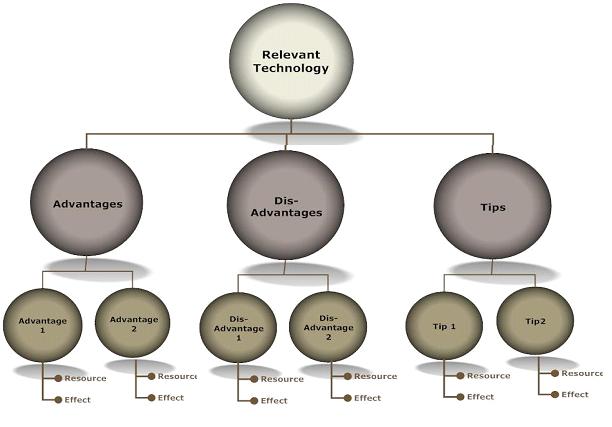|
Objectives
|
At the end of this unit you should be able to:
- apply relevant principles to determine the most appropraite mix of media and technology in the design and delivery of ODL courses.
|
|
Objectives
At the end of this unit the participants will able to:
- compare and contrast between print, audio/video and computer technologies
- determine the effectiveness and applicability of each these technology
|
|
|
|
| Advantages |
Disadvantages |
Guidlines for Incorporation |
- Extremely portable
- Comfortable
- Cost effective
- Readily
|
- Lacks interactions
- No audio/visual elements
- Require reading skills
- Time delay
|
 Tips: Tips:
- Distribute print materials well in advance
- Include clear directions for use
- Require interactions
- Specify a timeline
|
It is important to realise that media and technology do not necessarily differ in their effectiveness. They all have very peculiar strengths and limititations. However, a particular subject or topic may lend itself to a particular medium. Media and technology is primarily used for two purposes in the context of Open and Distance Learning (ODL), namely: to distribute learning content to learners; and to stimulate and support learning by means of one-way or two-way communication.
Our basic aim as educators should therefore be to determine the most appropriate mix of media and technology for a given learning outcome. The following principles and questions should guide decision-making in this process:
Learner profile (media and technology need to fit with learners' needs and realities)
How do they learn?
What are their motivational levels?
What learning difficulties do they normally face and how can technology be used to address this?
Do they have access to the required technology? If not, will they be able to acquire it?
Is there a distribution issue?
Do they have skills to be able to use the technology?
Do they have relevant prior learning?
Curriculum and type of material (media and technology need to be appropriate for the curriculum and for teaching effectiveness)
Is the content structured or unstructured?
How immediate is the need since development of structured content is generally time-consuming and more costly?
Will delivery be synchronous or asynchronous?
What is the lifespan of the course materials?
What is the size of the audience?
Capabilities of the media and technology (media and technology should match the needs of the learners)
How proven is the technology?
How difficult/costly will it be to maintain the technology?
Is there in-house capacity to maintain the technology or will it be outsourced?
Does it cater for interactivity?
Will the technology stimulate/motivate learners?
Can it be used for feedback to learners?
Will students be able to assess their progress?
Cost and time to produce content (media and technology must be affordable for the institution and the learner)
Do you have the time to produce the content?
Can you afford the preferred development and delivery model?
Resources (essentail resources should be available)
Reflection
|
Remember, a careful blend of media and technology drawing on their individual strengths and minimising their individual limitations is likely to produce the best results. Try and find a balance between quality and cost!
|
Four Main Categories of Technology
Objectives
At the end of this unit the participants will able to:
- compare and contrast between print, audio/video and computer technologies
- determine the effectiveness and applicability of each these technology
|
Print
Objectives
At the end of this section the participants will able to:
- determine the benefits and limitations of print media
|
| Print Material |
Print-based courses, or 'correspondence courses' are perhaps the oldest delivery method for distance education courses, having been available to students and learners for well over 100 years.
The more traditional print courses are provided entirely on paper.Printed course book, course guide, letters, comments on assignments are some examples.
Print courses are usually delivered via the mail, but some also have email or fax options to enhance communication between student and instructor.
|
| Advantages |
Disadvantages |
Guidlines for Incorporation |
- Extremely portable
- Comfortable
- Cost effective
- Readily
|
- Lacks interactions
- No audio/visual elements
- Require reading skills
- Time delay
|
 Tips: Tips:
- Distribute print materials well in advance
- Include clear directions for use
- Require interactions
- Specify a timeline
|
|
Objectives
At the end of this unit the participants will able to:
- compare and contrast between print, audio/video and computer technologies
- determine the effectiveness and applicability of each these technology
|
This Chart depicts the manner in which the following information is presented. |
|
|
